The many worlds of books are closed to you until you’ve actually learned how to read. The new reader needs to be shown the order in which the characters on the page are read, and how the various pages are sequenced relative to each other. These rudimentary details might work as a starting point, but more advanced information is needed to use a book to its maximum potential. Knowing that books are portable, and that bookmarks can save one’s place in a book, make the reading experience much more convenient.
People need to be taught how to use media platforms to maximize their enjoyment and utility. You only need to learn how to read once, but video games are different. New consoles feature new control schemes and new ways of telling stories; so, even veteran players will need to become accustomed to the new hardware.
In this context, video game launch titles serve a critical purpose. As games that are released for a new console on Day 1 of that console’s release, they represent the player’s first journey with the new system. They need to provide more than just an entertaining experience: they also need to motivate the player to keep going through a compelling game world, and they need to show the player how to fully appreciate the console on which the game is being played. If a launch title fails to accomplish these goals, the player won’t know why they should own this console, what they can do with this console, and how they can do those things.
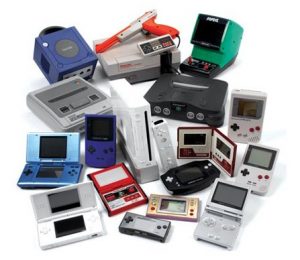
Nintendo consoles provide a rich library of influential launch titles. Given the company’s inclination towards integrating new kinds of interactivity into their consoles (e.g., motion control, GamePad, TV/portable hybrid), a new owner of a Nintendo console will probably need to learn “how to read” this system, even if they’ve gamed on other systems in the past. It was never feasible for a launch title to simply provide a tutorial without any degree of depth, as demonstrated by the critical and commercial failure of 1-2-Switch!, a minimalistic party game that launched with the Nintendo Switch.
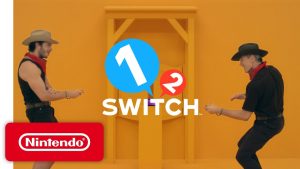
Perhaps two of Nintendo’s most beloved launch titles are Super Mario 64, coinciding with the 1996 debut of the Nintendo 64, and The Legend of Zelda: Breath of the Wild, which was released alongside the Nintendo Switch earlier this year. Both of these games were viewed as flagship titles for their respective consoles, and sit comfortably high on metacritic lists of the best-rated video games ever made.
I believe both of these games are superb games. But, in the context of what makes for an ideal launch game, these two Nintendo blockbuster titles are not created equal.
In this article, I argue that Super Mario 64 was a perfect launch title for the Nintendo 64, whereas Breath of the Wild was an imperfect launch title for the Nintendo Switch. Breath of the Wild would have been a perfect launch title for the Wii U, had Link’s Sheikah Slate been mapped onto the Wii U gamepad, as originally planned.
In order to argue this point, we’ll need to determine what the responsibilities of launch games are, in three steps:
- What makes Super Mario 64 the quintessential “first time with a book” experience?
- What does Breath of the Wild gain by being on the Switch versus the Wii U, and how does this impact the gameplay experience on the Switch?
- How could a hypothetical Wii U launch version of Breath of the Wild have been made into the perfect launch title?
In order to find specific examples of how games can be optimized for new console owners, we’ll now go back to the dawn of a 3D era, where polygons could be placed together with just enough detail to create a distinctive, virtual plumber.
What Makes Super Mario 64 So Super?
Super Mario 64 (‘SM64′) had the unique benefit (or burden) of being many gamers’ first exposure to the 3D-platformer genre of video games. Given the new kinds of challenges and battles that could only occur in 3D, fans of previous Mario installments had no advantage in SM64 compared to series newcomers. In this sense, everyone was “learning to read” for the first time with this new game and consoles.
The game recognizes that the controls of 3D games are entirely alien to many players, and therefore introduces these controls by manifesting the in-game camera as an actual flying cameraman. In any other game, this integration of tutorial elements into the game world might strike veteran gamers as patronizing. In SM64, though, everyone playing is united by a need to learn about 3D movement and the like; rather than being patronizing, then, the cameraman mechanic shows that everyone is equally new to this challenge.
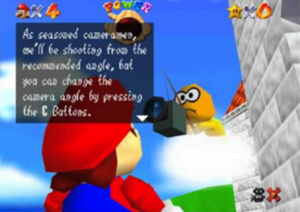
In SM64, the mere ability to explore Peach’s Castle in three dimensions brings the new control scheme of the Nintendo 64 to life. Rather than being an intrusive gameplay mechanic, the new possibilities of 3D movement permeate every nook and cranny of Peach’s Castle in an unobtrusive way.
By defining the conventions of the 3D platforming genre, SM64 showed the radical new changes that could result from adding a z-axis to the worlds of video games. SM64-styled games would soon flood the market, eventually making the 3D platformer into a home for a multitude games and “collect-a-thons.” Now that we engage with 3D video-game worlds on a daily basis, the novelty of Peach’s Castle might not seem so exciting; back when SM64 was released though, it was the first of its kind—and that was extraordinary.
One might then ask what makes SM64 a game that introduced the Nintendo 64 uniquely well, rather than other 3D-capable consoles like the PlayStation. The most straightforward answer is the Control Stick on the Nintendo 64 controller, which allowed for unrestricted movement in three dimensions. At this point in time, the PlayStation still utilized its original controller, which did not have an analog stick. Playing Mario 64 with a D-pad would have been a much more cautious and frustrating process than it was with the Control Stick, making the Nintendo 64 controller and SM64 a perfect match.
In a broader sense, SM64’s use of Mario, along with level design that simultaneously subverts and honors the older Mario games, would only be possible in a Nintendo game. Therefore, SM64 needed to exist on a Nintendo console: a console capable of rendering 3D graphics, and a console whose controller had an analog stick. The only contemporary console to fulfill all of those requirements was the Nintendo 64.
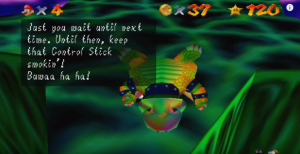
Breath of the Wild on Switch: A Great Game, But Not a Great Launch Game
Allow me to clarify upfront: if we assume that the Gamepad of the Wii U isn’t being used to represent the content of Link’s in-game Sheikah Slate, then the Switch version of Breath of the Wild (‘BotW’) outshines its Wii U counterpart. In other words, as a single-screen experience, the Switch version is the best the game could be. Indeed, for certain elements of the game, Switch users are better-positioned than Wii U owners to appreciate the elegance and brilliance of Hyrule.
And yet, BotW is a failure as a Switch launch game. Let us first consider what works well on the Switch, and why the thematic integration between BotW and the Switch is ultimately not enough to make it work as a perfect launch title.
On a narrative level, the Switch is better able to complement the themes of Breath of the Wild than could the Wii U. As the game’s nigh-overwhelming emphasis on freedom becomes clear to the player, the handheld Switch mode extends this freedom from Hyrule into the real world. The player can direct Link anywhere throughout Hyrule, while the player can be anywhere as well. Just as there are no barriers between any two points on the map of Hyrule, an HDMI cable and power outlet are no longer constraints upon the player’s freedom to engage with the game.
Nintendo removed second-screen functionality from the Wii U version of the game to make it equivalent to the Switch version. Given the limitation of the single screen, the game’s user interface is ingeniously designed, even if the two-screen Wii U setup would have been even better. BotW must remain playable in whatever circumstance the player wants to play. The player may be using a large TV or the Switch’s small screen, and may or may not have access to audio (if they’re playing in a loud public place without headphones, for example). BotW is designed in such a way that the player can continue playing even in such contexts. The game’s default display settings provide a number of simple icons that are readable even on the small Switch screen, providing a weather forecast, temperature, and more. One interface icon shows a waveform of the sounds Link is making; this lets the player receive audio feedback even if the player cannot listen to the game’s audio. The game’s audio, in turn, indicates to the player the danger of any given situation with a spare but well-integrated soundtrack, which can compensate for players unable to see small details on the Switch screen. Whether playing on a TV or on the go, the controller’s vibration tactually links the player to Link’s experiences in Hyrule: one can presumably feel these vibrations just as palpably, no matter where they’re playing the game.

But BotW is a failure as a launch title, because the connection between the game world on-screen and the player’s actions is noticeably imperfect. The player looks at Link looking at his Sheikah Slate, rather than having a second screen to simulate the Sheikah Slate for herself. Moreover, the Switch version’s best qualities, such as the elegant user interface, is a trademark design feature of many Nintendo titles on many Nintendo consoles. As a result, even though the Switch experience is both enjoyable and coherent, it fails to provide a reason why the game must be played on this specific console.
Parallel Timelines: Breath of the Wild as perfect Wii U launch title
As I said above, assuming Breath of the Wild is a single-screen experience, the Switch version is superior. The game design is simply better showcased on the Switch.
The coherence of the story and game world, however, could have been perfected on a Wii U. On the Switch, at no point is Link cognizant of the game switching from docked to tablet mode. To help the player accurately mirror Link’s use of the Sheikah Slate, the Switch would need to display the world of Hyrule on the television, while the Slate screen would be displayed on the handheld Switch screen. This isn’t something the Switch’s design can actually do—however, it is precisely what the Wii U is capable of doing with its Gamepad. If BotW had been designed for the Wii U in this way, we would have had an answer to the question, “why does this game need to exist on this console, and what does it teach me as a result?”
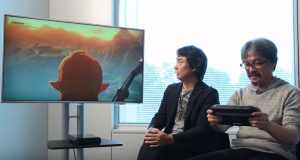
BotW empowers both Link and the player by giving them the power of choice: the power to go anywhere in Hyrule, to take down the Divine Beasts in any order, and the power to bring the game anywhere in the real world. Just as SM64′s third dimension provided a new power for the player to understand and master, so BotW provides the player with the power of exploring a living, breathing world. In our reimagined version of BotW as a Wii U launch title, as Link’s Sheikah Slate became more and more knowledgeable, so would the Wii U Gamepad. This truly remarkable gameplay-story integration would provide the why for the purchase of a Wii U: it would demonstrate the unique storytelling value of the Gamepad.
A key distinction to emphasize before concluding this article concerns what it means to be a “good game” versus a “good launch game.” These terms are not coextensive: not every good game is a good launch game (though every good launch game is probably also a good game). For example, the Switch version of BotW is a fantastic game, but a poor launch game. On the other hand, Batman Arkham City Armored Edition is a great game, and a great launch game for the Wii U. The act of the player using the Gamepad as a proxy for Batman’s wrist computer, goggles, and the like speaks to the aethetic potential of the Gamepad, as replicating this experience would be almost impossible on any other console.
Conclusion
It’s worth noting, in closing, that the principles I have discussed here aren’t exclusive to launch games: they suggest ways that any game can organically teach the player something through narrative. A facet of gaming that could especially benefit from this methodology would be modern-day tutorial levels that disrupt narrative, bore gamers, and alienate them from the world of the game.
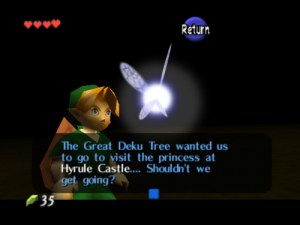
As iconic as poorly-implemented tutorial characters like Navi might be, they are loved in spite of their role as tutorial teachers, not because of that role. Although instruction manuals could serve the function of tutorials, I believe it is highly unlikely that most people will read a game manual when purchasing a new game in the late 2010’s. If the various controls and mechanics are introduced in the narrative, the same information can be conveyed in an endearing manner that increases a player’s degree of investment in a game’s narrative, rather than diminishing it.

Any good teacher wouldn’t teach a child to read just for the sake of reading a single book. Rather, the newly-minted reader is expected to enjoy their first book, and then seek out more in the future. This is what we should expect and demand from our ideal launch game: it provides a great story, in and of itself, but it also sets up the player to appreciate future stories that might be told with the same console.



